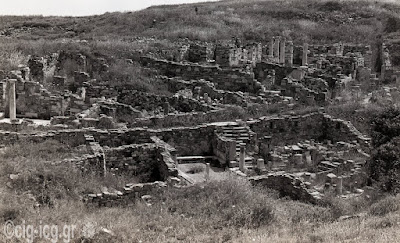Tuesday, February 27, 2018
Friday, February 23, 2018
Stories We Tell
For our Canadian film night this winter-spring we will be screening the 2012 film Stories We Tell (1 hour 48 minutes; English).
As described by Rotten Tomatoes, "In this inspired, genre-twisting film, Oscar-nominated writer/director Sarah Polley discovers that the truth depends on who's telling it. Polley is both filmmaker and detective as she investigates the secrets kept by a family of storytellers. She playfully interviews and interrogates a cast of characters of varying reliability, eliciting refreshingly candid, yet mostly contradictory, answers to the same questions. As each relates their version of the family mythology, present-day recollections shift into nostalgia-tinged glimpses of their mother, who departed too soon, leaving a trail of unanswered questions. Polley unravels the paradoxes to reveal the essence of family: always complicated, warmly messy and fiercely loving."
Winner of 24 awards at film festivals around the world, Stories We Tell explores the elusive nature of truth and memory, but at its core is a deeply personal film about how our narratives shape and define us as individuals and families, all interconnecting to paint a profound, funny and poignant picture of the larger human story.
Join us on Wedensday evening, February 28, at 19.30, to discover the truth!
Best wishes,
Jonathan Tomlinson
Assistant Director
Tuesday, February 20, 2018
Tuesday, February 13, 2018
The Fred Winter Collection
The Fred Winter Collection
Friday, February 9, 2018
Terracotta figurines at Minoan "Peak Sanctuaries": How did they become broken?
Because of their allegedly ‘careless’ production and ‘poor’ appearance, it has been widely assumed that Minoan peak sanctuary figurines were not items made to last. In fact, is has been stated that they were made to be broken as soon as their ritual use was completed, by being thrown into rock crevices or into bonfires. The fact that they were intentionally broken by ritual participants, however, has never been questioned, and the influence of other factors in their fragmentation has never been considered. Drawing upon a direct examination and experimental research on such artefacts, Dr. Murphy will explore in her lecture the implications that the aforementioned statements have on our understanding of human and non-human agency in the context of figurine breakage. Starting with an examination of the material conditions upon which these items’ deposition at peak sanctuaries relied – such as their solid assemblage and their positioning on a base – Dr. Murphy will suggest that they were placed on display at the sites, and, thus, she will argue that they may not have been as immediately broken as is usually believed. In fact, the figurines may not have been uniquely broken by humans, but influence from the wider context in which they were deposited may have contributed to their fragmentation. Indeed, other factors, such as the weather and animal interference, for example, may have been causes. In the light of this observation, it is moreover conceivable that the breakage of peak sanctuary figurines occurred over time, over several generations, and consisted of a long-term process rather than an event isolated in a single moment. Dr. Murphy will, therefore, propose that non-human-provoked material decay can also be considered as a form of fragmentation where Minoan peak sanctuary figurines are concerned.
Cordially,
David Rupp
Director









